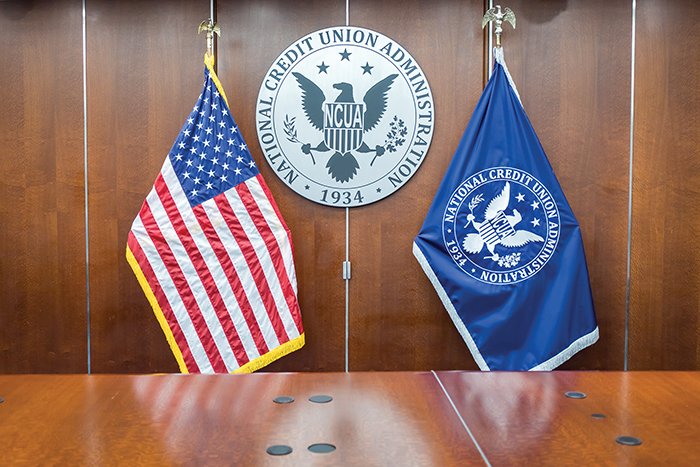 Source: Shutterstock.
Source: Shutterstock.
Improved retail spending, rising vaccination rates and greater hiring have been leading some observers to believe the economy is on the cusp of a spectacular rebound.
Those observers included NAFCU Chief Economist Curt Long, Fed chair Jerome Powell and bank CEOs who announced earnings this week.
Recommended For You
The Census Bureau on Thursday reported that retailers and restaurants generated $627.9 billion in sales in March, representing seasonally adjusted gains of 9.8% from February and 27.7% from March 2020.
"Retail sales skyrocketed in March fueled by stimulus checks, pared back social distancing measures and good weather," Long said in a NAFCU news release Thursday. "NAFCU expects retail sales to remain a major tailwind through the rest of the year, fueling the best year of GDP growth since the early 1980s."
Long noted that the 9.8% month-to-month gain after seasonal adjustments is the second-largest measured by the government, second only to the April-to-May 2020 gain of 18.3%, which followed the all-time record drop of 14.9% from March to April.
"The past year of volatility should steady once we are past the present burst of commerce," Long said. "But with plenty of pent-up demand, pandemic savings and eager consumers, the burst should last through the summer at least."
Also on Thursday, the Labor Department reported that new claims for jobless benefits were 657,000 last week, a decrease of 100,000 from the previous week and the lowest weekly level in the last year.
The Fed's Beige Book report released Wednesday "relates the growing optimism around the broader reopening of the economy," Long said. "Employers are ramping up hiring, which should further buoy consumer sentiment and spur consumption."
Powell said Wednesday the U.S. economy is headed into a period of faster growth and faster job creation.
"The economy at this point does seem to be at a bit of an inflection point," Powell said Wednesday. "That makes sense with ever more widespread vaccinations, strong fiscal policy, continued support from monetary policy. You see the economy opening. You see ridership on airplanes going up and people going back to restaurants."
However, Powell warned the economy could be set back by a new spike in COVID-19 cases. "We don't see that yet."
Bank CEOs have also been saying they are seeing the beginnings of an economic surge, even as some of their numbers are still lagging.
Bank of America's investor presentation released with first-quarter earnings Thursday carried the headline, "Economic Recovery Has Gained Speed." It showed U.S. GDP growth rates accelerating. It also showed sharp gains in debit and credit card spending in March — not only compared with March 2020 when the pandemic started, but also from two years earlier.
"While low interest rates continued to challenge revenue, credit costs improved and we believe that progress in the health crisis and the economy point to an accelerating recovery," BoA CEO Brian Moynihan said.
Bank of America's annualized return on average assets was 1.13% for the first quarter, up from 0.65% from 2020's first quarter and 0.78% in the fourth quarter. It benefited from a $1.9 billion claw back from its loan loss provisions for the quarter, compared with a loss provision of $4.8 billion in 2020's first quarter.
BoA's news release said the reserve release reflected "an improved macroeconomic outlook and balance declines."
Bank of America's average consumer loan balances fell 8.2%, including a drop of 21.5% on its average credit card balances.
Wells Fargo on Wednesday reported that it earned $4.7 billion in the first quarter, up from $653 million in 2020′s first quarter. Like BoA, the difference was largely a product of loan loss provisions. In 2020′s first quarter, Wells Fargo took a $4 billion expense; in 2021′s first quarter it took back $1 billion as income.
CEO Charlie Scharf noted that GDP growth is on track to surpass its pre-pandemic peak by the end of the summer, and rise this year faster than any year since 1984.
"Additional fiscal stimulus, continued monetary support and the acceleration of vaccine availability provide a path to a more complete reopening and further economic expansion," Scharf said.
Wells Fargo CFO Mike Santomassimo said mortgage originations fell from the fourth quarter to the first quarter, and are expected to fall again in the second quarter because of the decline in refinancings.
On the balance sheet, credit card balances fell 11% to $34.2 billion and auto loans were $50 billion, flat from a year earlier.
However, Santomassimo noted auto loan originations were $7 billion in the first quarter, up 32% from the fourth quarter and 8% higher than a year ago "in a strong market with supply shortages for both new and used cars."
"With the improving economic forecasts, we are gradually returning to pre-pandemic underwriting policies," Santomassimo said.
© Touchpoint Markets, All Rights Reserved. Request academic re-use from www.copyright.com. All other uses, submit a request to [email protected]. For more inforrmation visit Asset & Logo Licensing.







